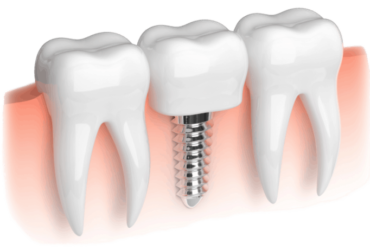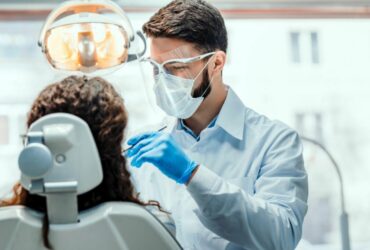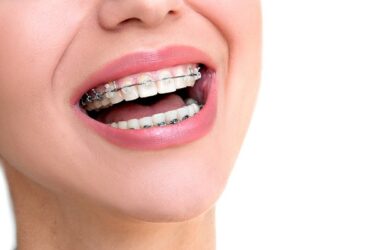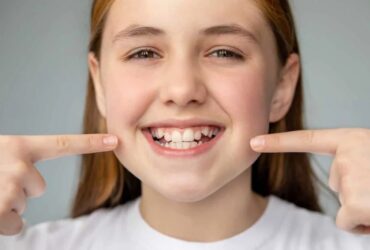Are you considering orthodontic treatment to achieve a straighter smile but unsure whether to go for Invisalign or traditional braces? You’re not alone. Many people find themselves torn between these two popular options. In this article, we will help you make an informed decision by comparing Invisalign and traditional braces, considering aspects such as effectiveness, comfort, aesthetics, and lifestyle impact.
For those seeking a more discreet and flexible solution, Invisalign may be the answer. These clear aligners are virtually invisible, allowing you to straighten your teeth without drawing attention. With the added advantage of being removable, you can enjoy your favourite foods without the restrictions that traditional braces often entail. On the other hand, if you prioritise durability and predictability, traditional braces might be the better choice.
By weighing the pros and cons of traditional braces and Invisalign in London or across the UK,you can find the treatment option that aligns with your dental needs and lifestyle. So, let’s dive deeper into the differences between these two orthodontic methods and find the perfect fit for your journey towards a straighter smile.
Understanding Invisalign and Traditional Braces
Invisalign is a modern orthodontic treatment that uses a series of clear, custom-made aligners to gradually move your teeth into the desired position. These aligners are made from a smooth, BPA-free plastic material, ensuring a comfortable fit in your mouth. The aligners are replaced every two weeks, with each new set exerting gentle pressure to shift your teeth into alignment.
On the other hand, traditional braces consist of metal brackets that are bonded to your teeth and connected by wires and polymer bands. The orthodontist adjusts these components periodically to guide your teeth into proper alignment. Traditional braces are fixed appliances, meaning they cannot be removed until the treatment is complete.
Pros and Cons of Invisalign
Pros:
- Aesthetics:Invisalign aligners are virtually invisible, making them a popular choice for those who are conscious about the appearance of traditional braces. They allow you to straighten your teeth discreetly, giving you the confidence to smile without hesitation.
- Removability: Unlike traditional braces, Invisalign aligners can be removed for eating, drinking, brushing, and flossing. This means you can continue to enjoy your favourite foods and maintain optimal oral hygiene throughout the treatment.
- Comfort: Invisalign aligners are made from smooth plastic, reducing the likelihood of irritation or discomfort compared to the metal brackets and wires used in traditional braces.
Cons:
- Compliance: Invisalign aligners must be worn for a minimum of 20-22 hours per day for effective results. If you struggle with consistently wearing the aligners as directed, the treatment may take longer or be less effective.
- Limited Complex Cases: Invisalign may not be suitable for complex orthodontic cases, such as severe bite issues or significant tooth rotation. Your orthodontist will assess your specific needs and determine if Invisalign is a viable option.
- Price: Invisalign treatment tends to be more expensive than traditional braces, although the cost can vary based on factors such as the complexity of your case and your location.
Pros and Cons of Traditional Braces
Pros:
- Durability and Predictability: Traditional braces have a long-standing track record of effectively correcting various orthodontic issues. They are highly durable and can withstand more significant pressure, making them suitable for complex cases.
- Versatility: Traditional braces can be used to address a wide range of orthodontic problems, including severe crowding, crossbites, and jaw misalignments. The fixed nature of braces allows for precise control over tooth movement.
- Cost: Traditional braces are generally more affordable than Invisalign, making them a more accessible option for individuals on a budget.
Cons:
- Aesthetic Concerns: Traditional braces are more noticeable compared to Invisalign aligners. The metal brackets and wires can draw attention to your mouth, which may be a concern for those looking for a more discreet option.
- Oral Hygiene Challenges: Cleaning around traditional braces can be more difficult due to the brackets and wires. Special attention and tools are required to ensure proper oral hygiene and prevent issues such as tooth decay or gum disease.
- Dietary Restrictions: Certain foods, such as sticky or hard items, can damage traditional braces. It is necessary to avoid these foods to prevent bracket breakage or wire displacement.
Factors to Consider When Choosing Between Invisalign and Traditional Braces
When deciding between Invisalign and traditional braces, several factors should be taken into account:
- Orthodontic Needs: The severity of your orthodontic issues will play a crucial role in determining the most suitable treatment option. Invisalign is generally suitable for mild to moderate cases, while traditional braces can handle more complex situations.
- Aesthetics: Consider your personal preferences and lifestyle. If you value a discreet treatment option, Invisalign may be the better choice. However, if the appearance of braces is not a concern for you, traditional braces can provide effective results.
- Treatment Duration: Invisalign treatment duration can vary depending on the complexity of the case, but it is often comparable to traditional braces. However, your orthodontist will provide a more accurate estimate based on your specific needs.
- Maintenance and Care: Both Invisalign and traditional braces require proper maintenance and care to ensure successful treatment. Consider your willingness and ability to follow the recommended guidelines for each option.
Cost Comparison of Invisalign and Traditional Braces
The cost of orthodontic treatment can vary depending on various factors, including the complexity of your case, the location of the dental practice, and additional services required. In general, Invisalign treatment tends to be more expensive than traditional braces. It is recommended to consult with your orthodontist to get a personalised cost estimate and discuss any available financing options.
Success Rates and Treatment Duration
Both Invisalign and traditional braces have proven to be effective in achieving straighter smiles. The success rates of these treatments largely depend on factors such as patient compliance and the severity of the orthodontic issues being addressed.
In terms of treatment duration, the length of time required can vary depending on individual cases. On average, Invisalign treatment lasts between 12-18 months, while traditional braces typically take around 18-24 months. Your orthodontist will provide a more accurate estimate after evaluating your specific needs.
Maintenance and Care for Invisalign and Traditional Braces
Proper maintenance and care are crucial for successful orthodontic treatment, regardless of whether you choose Invisalign or traditional braces. Here are some key points to consider:
Invisalign:
- Remove aligners before eating or drinking anything other than water.
- Brush and floss your teeth before reinserting the aligners.
- Clean the aligners regularly using a soft toothbrush and mild soap or Invisalign cleaning crystals.
- Store the aligners in their case when not in use to prevent loss or damage.
Traditional Braces:
- Brush your teeth thoroughly after every meal to remove food particles and plaque.
- Use interdental brushes or floss threaders to clean between the brackets and wires.
- Avoid sticky or hard foods that can damage the braces.
- Attend regular appointments with your orthodontist for adjustments and maintenance.
Frequently Asked Questions about Invisalign and Traditional Braces
Can Invisalign fix severe crowding or bite issues?
Invisalign is suitable for mild to moderate cases, but severe crowding or bite issues may require traditional braces or other orthodontic interventions. Consult with your orthodontist to determine the best treatment option for your specific needs.
Will Invisalign affect my speech?
While it may take a few days to adjust to wearing Invisalign aligners, most people find that any speech changes are minimal and temporary. With practice, you will be able to speak clearly with the aligners in place.
Can I chew gum with Invisalign aligners?
Chewing gum with Invisalign aligners is not recommended, as it can stick to the aligners or cause them to become misaligned. It is best to remove the aligners before chewing gum.
How often do I need to visit the orthodontist with traditional braces?
Typically, orthodontic visits to your local dentist in New Cross, London or across the UK for traditional braces occur every 4-8 weeks. These appointments allow the orthodontist to monitor your progress, make any necessary adjustments, and ensure the treatment is on track.
Will traditional braces cause discomfort?
It is common to experience some discomfort or soreness after the initial placement of traditional braces or after each adjustment. However, over-the-counter pain relievers and orthodontic wax can help alleviate any discomfort.
Making the Final Decision: Invisalign or Traditional Braces?
Choosing between Invisalign and traditional braces ultimately depends on your individual dental needs, preferences, and lifestyle. If you prioritise aesthetics and flexibility, Invisalign may be the ideal choice. However, if durability and versatility are more important factors for you, traditional braces might be the better option. It is essential to consult with an experienced orthodontist who can assess your specific case and recommend the most suitable treatment option.
Remember, both Invisalign and traditional braces have proven track records in achieving beautiful, straight smiles. The key is to choose a treatment that aligns with your goals, comfort level, and budget. So, take the time to explore both options and consult your local dentist, ask questions, and make an informed decision that will lead you towards a confident and straighter smile.












